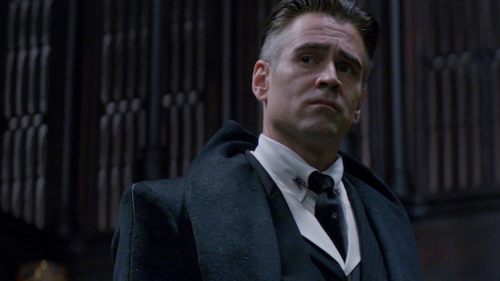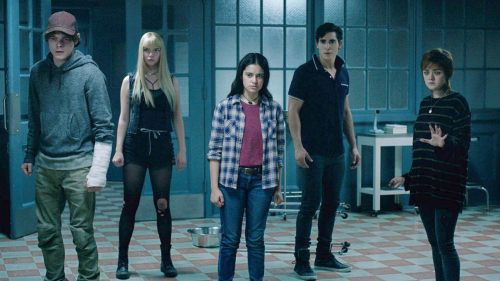SAVING MR. BANKS Movie Review: A Spoonful Of Darkness Helps The Disney Go Down
The forced happiness of Disneyland has always seemed to me like perfume sprayed on a rotting corpse - nothing can mask the underlying odor that punctures even the brightest scent. Despair lurks everywhere in the Disney empire, and it’s being kept ever at bay by rictus cast member grins and almost martial whimsy. I could not have been more surprised that Saving Mr. Banks lays all of that bare.
Based - likely loosely - on the true story of Walt Disney attempting to wrest the rights to Mary Poppins from her creator, PL Travers, Saving Mr. Banks is an insightful, moving and deep examination of the way trauma impacts art and how collaboration elevates and transforms personal art into something bigger and grander. It also touches nicely on the ways that adaptations work, and forces us to consider what we think is vital to an adapted work versus what can be comfortably lost. And it peels back the curtain just a little bit on Walt Disney, briefly showing the wounded inner boy he was trying to heal with his phony wonderland. "The best way to criticize a movie is to make another movie," Godard said, and Saving Mr. Banks is definitely a film in that mold; it may not be critical of Mary Poppins or Walt Disney, but it's deeply analytical of both.
The film is saddled with an often clunky flashback structure that parallels the Travers' ‘modern’ actions - a 1961 trip to Los Angeles to be wooed by Walt - with her childhood in a remote Australian town. The present day Travers is a stern, tough woman, allergic to cartoons and dance numbers, and the central mystery of the story is how she got that way, and what wounds Mary Poppins covers for her. That parallel structure allows the movie to compare and contrast her father with Walt; her dad at first seems like a wonderful man, full of invention and imagination and play, but it quickly becomes apparent that all of this is covering up a festering hole in his soul - a hole he has been filling with alcohol. What, the movie asks, is behind Walt Disney’s invention and imagination?
The flashbacks are often too long, and they only become transcendent once; Travers is listening to songwriters Richard and Robert Sherman come up with “Fidelity Fiduciary Bank” and the lyrics of the song infect her flashback to a time when her drunken father humiliated the family on stage in front of the whole town. It’s a great moment, one that speaks to the film’s exploration of artistic catharsis, but the movie needed more scenes like it.
Emma Thompson is Travers, and she’s marvelous in a role requires her to be, for most of the running time, a scold, an uptight bore, rude and generally unpleasant. I’m sure the script by Kelly Marcel and Sue Smith smoothed some of Travers’ edges, but I’m glad they did because it already takes an enormous talent like Thompson to make the character palatable. Thompson finds the loneliness inside Travers and lets it out slightly, just enough to undercut her nasty qualities with an ineffable sadness.
Playing against her is Tom Hanks as Walt. The role is no Captain Phillips, but it’s hard to imagine anyone else inhabiting the folksy, invented skin of everybody’s Uncle Walt. Those hoping to see Walt’s anti-semitic, anti-labor and blacklisting side portrayed will be - unsurprisingly - disappointed, but Saving Mr. Banks does allow Hanks to do some nice slow burn irritation and show a tiny hint of darkness in the Magic Kingdom. The movie even has Walt smoking, which is not a big deal to normal human beings but to the cult-like Disney fiends it’s kinda scandalous.
The real standout in the movie, to me, is Colin Farrell as Travers’ dad. It’s sometimes easy to forget that Farrell is a real actor, and here he delicately portrays a man who is both a wonderful father and a monster, a man who truly wants to make a better life for his children but who cannot help destroying them. His relationship with his daughter is touching and, in the end, devastating.
Saving Mr. Banks is better than the nature of the story would have you believe, and miles better than you would expect from a Disney movie about Walt Disney. It’s not exactly an objective examination of the man, but it’s not the drooling hagiography I feared. Besides, this is truly PL Travers’ story, and the film allows Travers to say all of the things I think about Disneyland and Disney cartoons and the gauche merch and grinding capitalism of it all without ever proving her wrong. Director John Lee Hancock actually gets some subversive stuff in at the end, when Travers attends the Mary Poppins premiere; as she walks down the red carpet he shoots the forced frivolity, which includes people in Disney character costumes blowing kisses to celebrities, in such a way that it all looks garish and packed in too tight and overwhelming. Yeah, the movie admits, a lot of this shit is fugly and phony.
But the phoniness works for many people, and Saving Mr. Banks nicely illustrates how you can achieve catharsis even from art you don’t like or respect. Storytellers love telling stories about how important telling stories is, but Saving Mr. Banks switches it up a bit by showing up important stories are to those telling them. We may have all fallen in love with her character, but Mary Poppins was actually there for PL Travers, not us.



